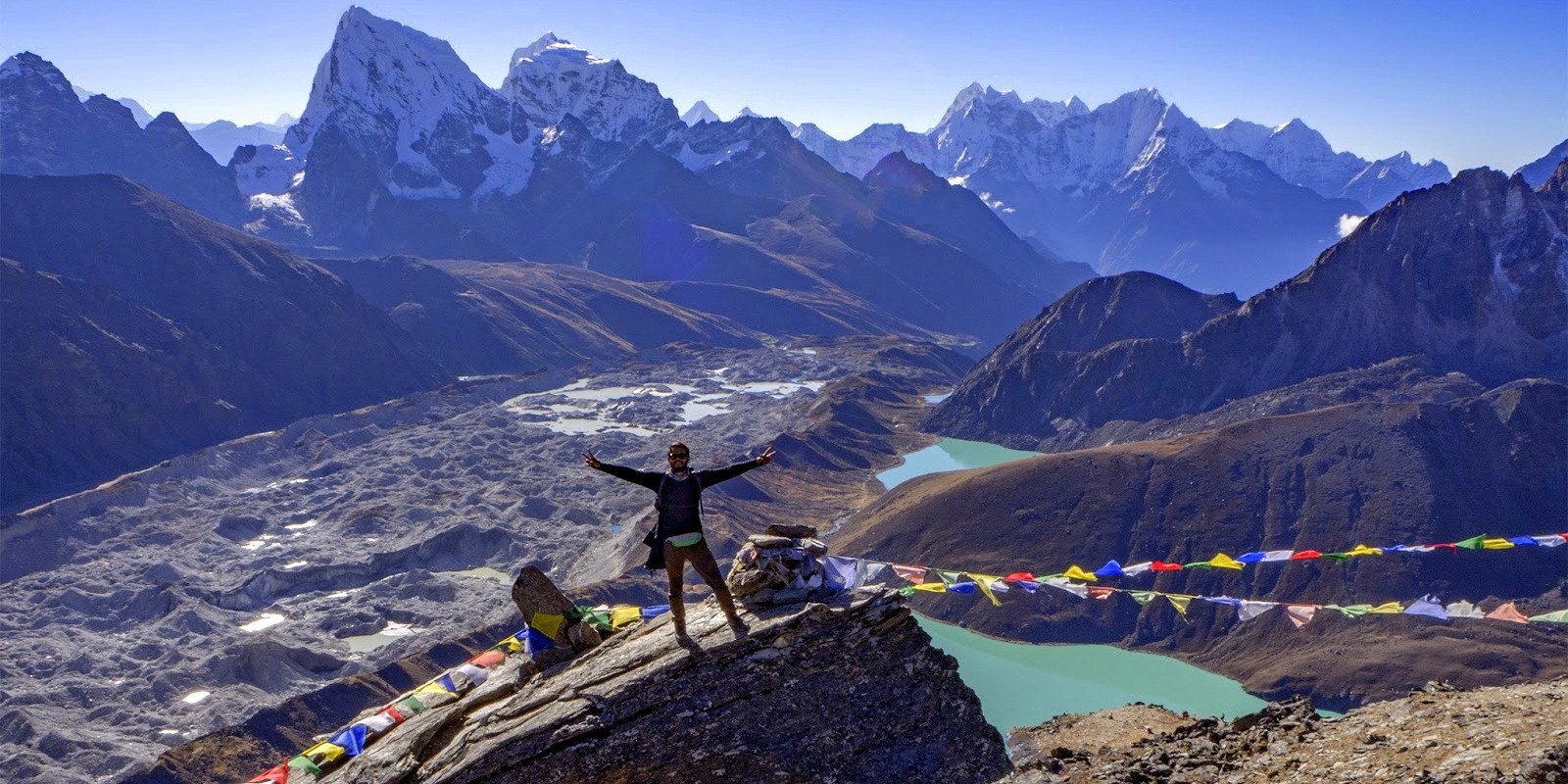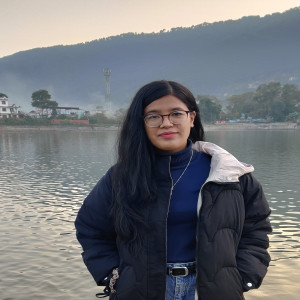Everest Base Camp Trek
The Everest Base Camp Trek is one of the most iconic and exhilarating trekking adventures in the world. This trek allows you to follow in the footsteps of legendary mountaineers on their way to conquer the world’s highest peak, Mount Everest. Here's a detailed look at what makes this trek a must-do for adventure enthusiasts:
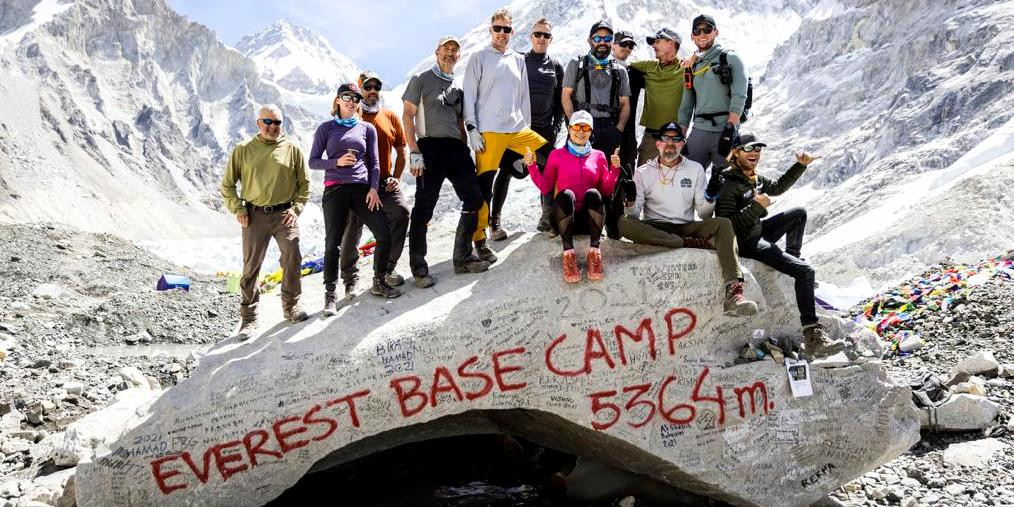
Overview
-
Duration: Typically 12-14 days
-
Start/End: Lukla, Nepal
-
Difficulty Level: Challenging
-
Best Season: Pre-monsoon (March to May) and post-monsoon (September to November)
Key Highlights
-
Tengboche Monastery: Visit one of the highest monasteries in the world, with panoramic views of the Himalayan giants, including Everest, Ama Dablam, and Lhotse.
-
Kala Patthar: For many, the highlight of the trek, Kala Patthar offers unmatched views of Everest and its surrounding peaks.
-
Sherpa Culture: Immerse yourself in the rich culture of the Sherpas, the renowned mountain people of Nepal.
-
Sagarmatha National Park: Experience this UNESCO World Heritage Site that is home to significant flora and fauna, including rare species like the snow leopard and the red panda.
Preparation Tips
-
Physical Preparation: It is crucial to be in good physical condition; hence, regular cardiovascular training prior to the trek is recommended.
-
Gear: Invest in high-quality trekking gear, including a good pair of hiking boots, warm clothing, and a durable backpack.
-
Travel Insurance: Make sure you have travel insurance that covers high-altitude trekking and emergency evacuation.
The Everest Base Camp trek is more than just a trek; it’s a journey into the heart of the Himalayas, offering awe-inspiring views and lifelong memories. Whether you are an avid trekker or a casual hiker seeking to fulfill a bucket-list adventure, the Everest Base Camp trek promises an unforgettable adventure.
Annapurna Circuit Trek
The Annapurna Circuit Trek is renowned for its striking beauty and the diverse experiences it offers. This trek circles the Annapurna massif, providing trekkers with an opportunity to witness a wide range of climates, landscapes, and cultures. Here's a comprehensive overview of the Annapurna Circuit Trek:
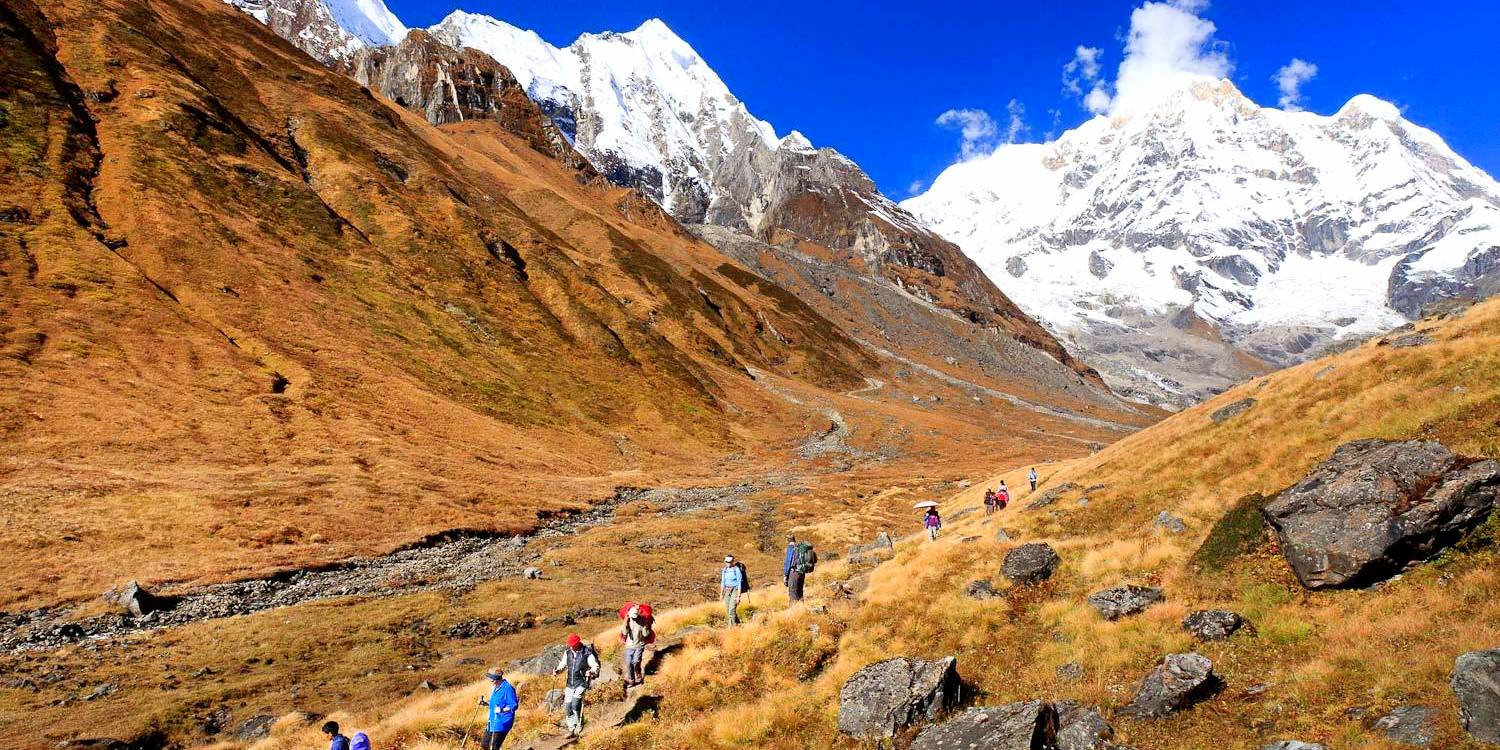
Overview
-
Duration: Typically 12-21 days, depending on the chosen route and pace
-
Start/End: Begins in Besisahar or Bhulbhule and traditionally ends in Nayapul, with options to finish in Jomsom if time-constrained
-
Difficulty Level: Moderate to challenging
-
Best Season: Pre-monsoon (March to May) and post-monsoon (September to November)
Key Highlights
-
Thorong La Pass: Crossing Thorong La at 5,416 meters (17,769 ft) is the highest and most challenging point of the trek, offering dramatic Himalayan views.
-
Manang Village: A culturally rich village where trekkers often take a rest day for acclimatization. Nearby attractions include the Gangapurna Glacier Lake.
-
Muktinath Temple: An important pilgrimage site for both Hindus and Buddhists, located beyond the Thorong La Pass.
-
Marpha: Known as the apple capital of Nepal, this charming village is famous for its orchards and local apple brandy.
-
Poon Hill: Though not part of the traditional Annapurna Circuit, many trekkers choose to include a detour to Poon Hill for sunrise views over the Annapurnas and Dhaulagiri.
Preparation Tips
-
Physical Fitness: Due to the length and variety of terrains, being physically fit will significantly enhance your trekking experience.
-
Proper Gear: Layered clothing, sturdy boots, and a comfortable backpack are essential, as weather conditions can vary greatly.
-
Acclimatization: Pay attention to your body and take necessary acclimatization days to avoid altitude sickness.
The Annapurna Circuit Trek is not just a physical journey but also a voyage through diverse ecological zones and cultures, offering a profound perspective on the natural and human life of the Himalayas. This trek promises memories that will last a lifetime, making it a must-do for anyone passionate about exploring the great outdoors.
Annapurna Base Camp Trek
The Annapurna Base Camp Trek is a spectacular journey that brings trekkers close to the immense Annapurna massif, offering a combination of majestic mountain views, vibrant cultures, and diverse landscapes. This trek is popular among both seasoned hikers and beginners due to its moderate difficulty and the profound beauty of the Annapurna region.
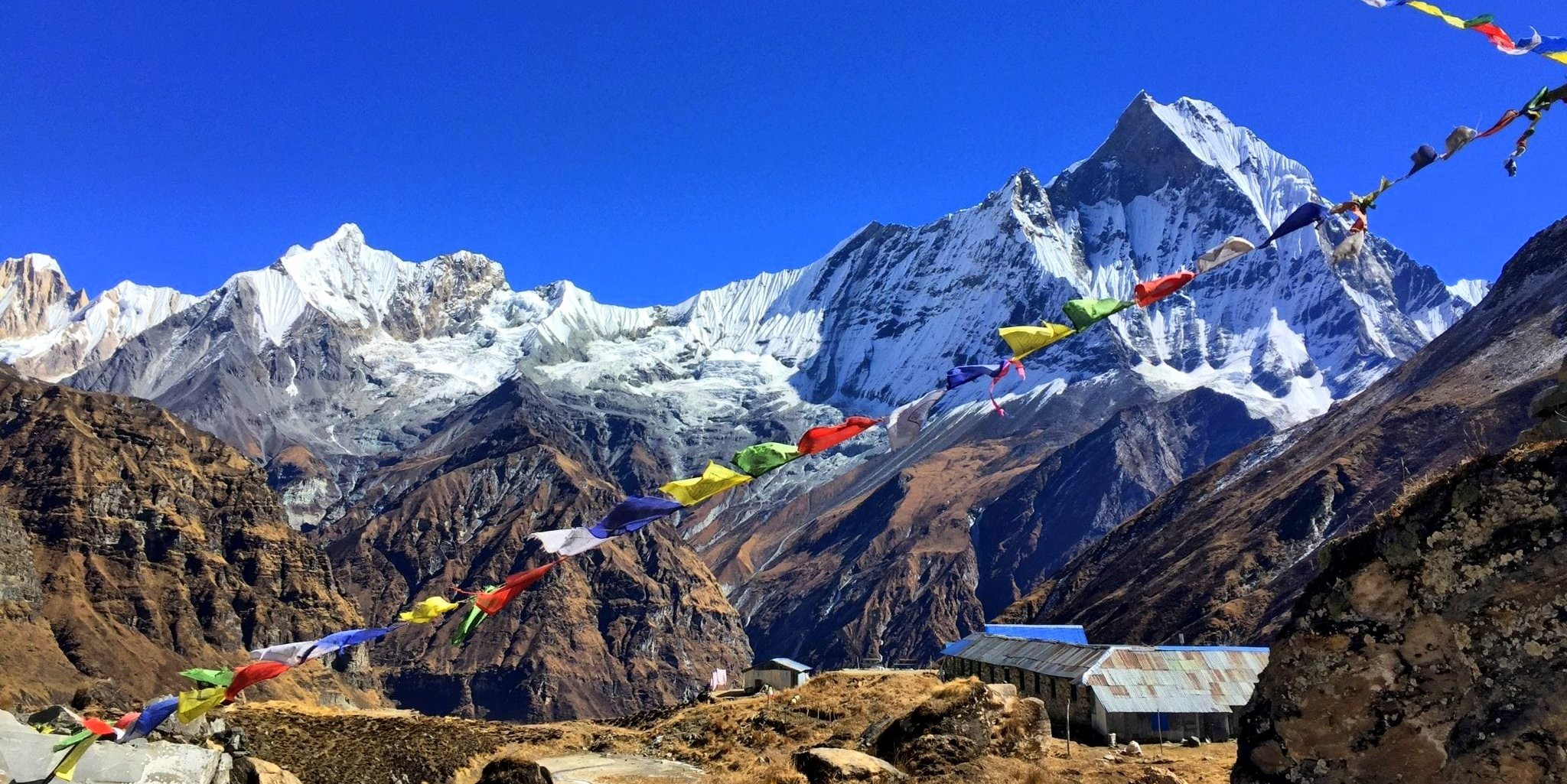
Overview
-
Duration: Typically 7-12 days, depending on the starting point and trekking pace
-
Start/End: The trek usually begins in Nayapul or Phedi and ends in Nayapul, looping back to Pokhara.
-
Difficulty Level: Moderate
-
Best Season: Pre-monsoon (March to May) and post-monsoon (September to November)
Key Highlights
-
Machapuchare (Fishtail Mountain): Renowned for its unique fishtail shape, this mountain is revered by the local population and offers a stunning backdrop throughout the trek.
-
Annapurna Base Camp: Situated at 4,130 meters (13,549 ft), the base camp provides a 360-degree mountain panorama that includes Annapurna South, Annapurna I, Hiunchuli, and others.
-
Hot Springs at Jhinu Danda: After days of trekking, relax in the natural hot springs located near the village of Jhinu Danda.
-
Diverse Flora and Fauna: Trek through the Annapurna Conservation Area, which is home to diverse ecosystems with a variety of flora and fauna.
Preparation Tips
-
Acclimatization: Listen to your body and take the necessary rest to adjust to the altitude, especially beyond 3,000 meters.
-
Equipment: Ensure you have good trekking boots, warm clothing, and a sturdy backpack. Weather in the mountains can change rapidly, so be prepared for various conditions.
-
Physical Conditioning: Engage in physical preparation before the trek to enjoy the journey more comfortably.
The Annapurna Base Camp Trek is an unforgettable adventure that offers an incredible mix of natural beauty, cultural richness, and physical challenge, all within the breathtaking environment of the Himalayas. It's an experience that draws trekkers back to Nepal time and time again.
Langtang Valley Trek
The Langtang Valley Trek is a captivating journey into a region known as "the valley of glaciers." This trek is ideal for those looking to explore beautiful mountain landscapes with relatively easy access from Kathmandu. Despite being close to the capital, Langtang Valley offers a tranquil trekking experience, less crowded than its famous counterparts, the Everest and Annapurna regions.
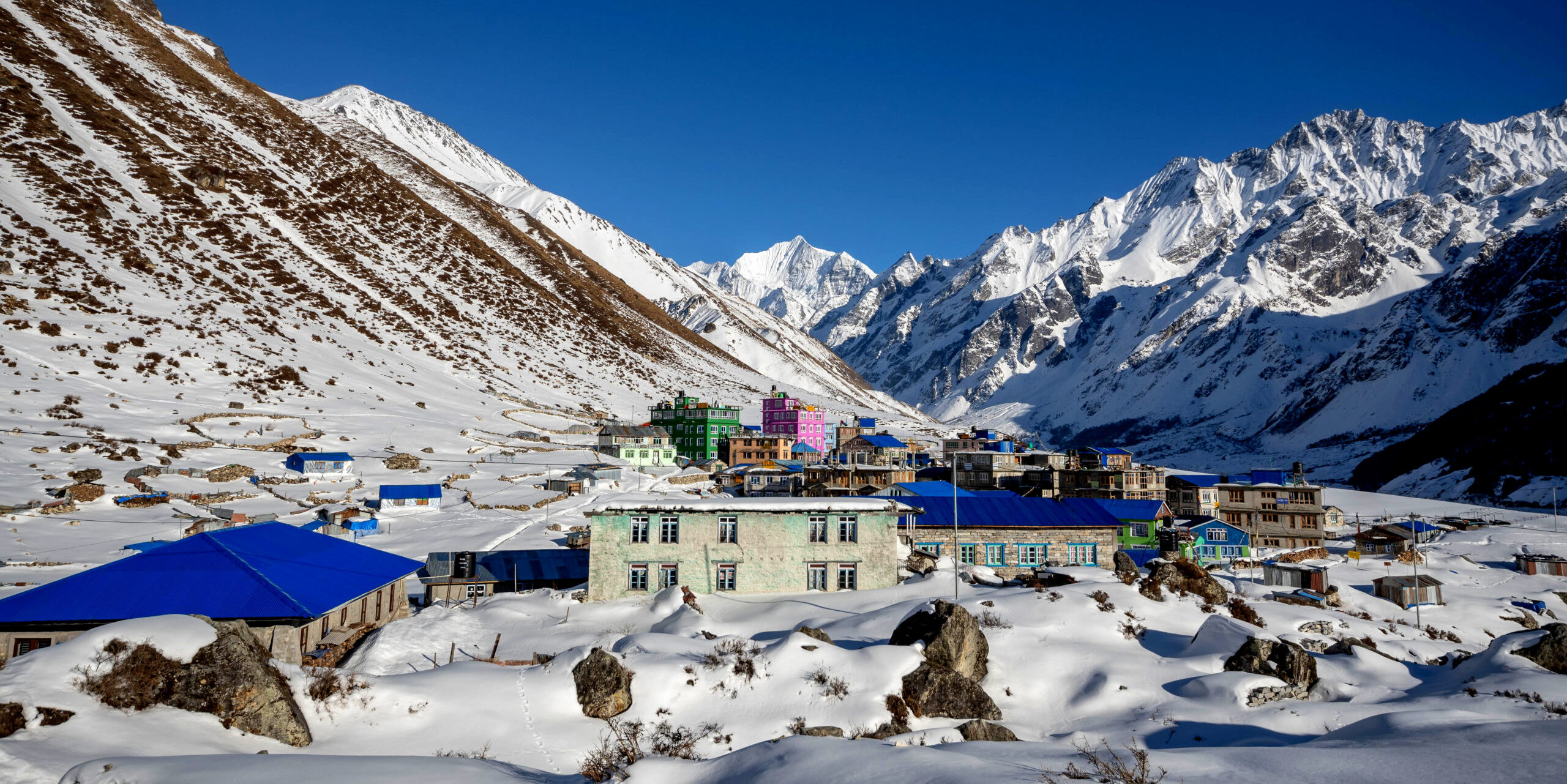
Overview
-
Duration: Typically 7-10 days
-
Start/End: The trek starts and ends in Syabrubesi, which is a day’s drive from Kathmandu.
-
Difficulty Level: Moderate
-
Best Season: Pre-monsoon (March to May) and post-monsoon (September to November)
Key Highlights
-
Langtang National Park: Trek through this protected area that’s home to diverse wildlife, including the rare red panda and Himalayan black bear.
-
Kyanjin Gompa: Visit this ancient monastery and explore the spiritual heart of the Langtang region.
-
Langtang Lirung and Surrounding Peaks: Enjoy spectacular views of Langtang Lirung, Langtang Ri, and other peaks.
-
Local Culture: Experience the rich culture of the Tamang and Sherpa communities, who share a similar culture with the Tibetan people.
Preparation Tips
-
Physical Fitness: While considered moderate, the trek still requires good physical condition to enjoy the daily hikes comfortably.
-
Gear: Proper hiking boots, warm clothing, and a quality backpack are essential. Layering is key, as temperatures can vary.
-
Permits: Ensure you have the necessary permits for Langtang National Park and the TIMS card, which can be arranged by a trekking agency.
The Langtang Valley Trek is an enriching experience that combines natural beauty, cultural encounters, and adventure, making it an excellent choice for those looking to explore the Himalayas without venturing too far from Kathmandu.
Manaslu Circuit Trek
The Manaslu Circuit Trek is a remarkable journey around the world's eighth-highest mountain, Manaslu, which stands at an impressive 8,163 meters (26,781 ft). This trek is known for its remote and untouched beauty, offering trekkers a less commercialized and more authentic experience compared to the more popular Everest and Annapurna circuits. The Manaslu trek is challenging but incredibly rewarding, featuring stunning landscapes, diverse cultures, and unparalleled mountain views.
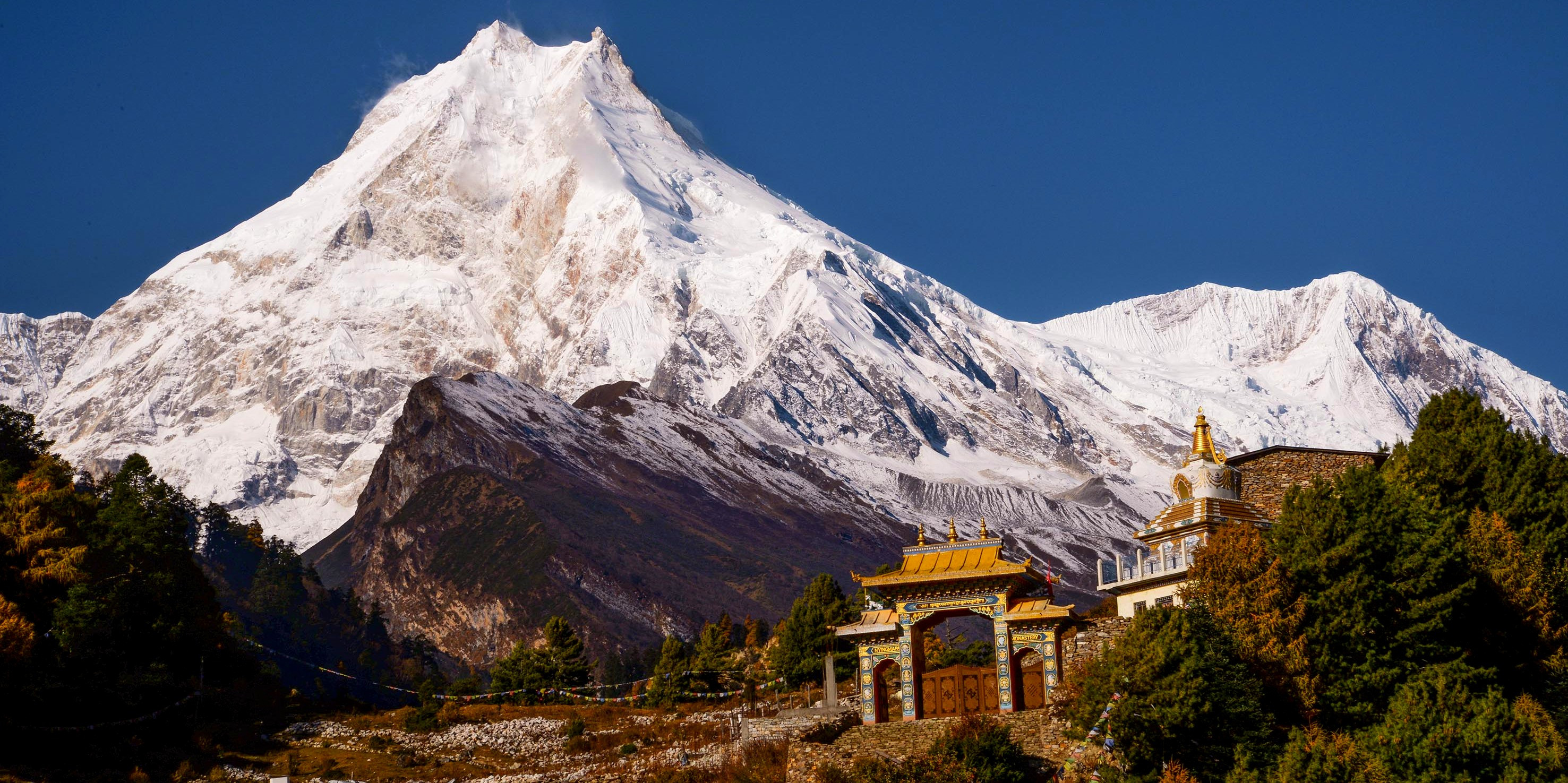
Overview
-
Duration: Typically 14-18 days
-
Start/End: Begins in Soti Khola and ends in Besisahar, which also connects with the Annapurna Circuit.
-
Difficulty Level: Challenging
-
Best Season: Pre-monsoon (March to May) and post-monsoon (September to November)
Key Highlights
-
Larkya La Pass: Crossing the Larkya La Pass at 5,106 meters (16,752 ft) is one of the trek's most challenging and rewarding parts, offering spectacular views of Manaslu and surrounding peaks.
-
Tsum Valley: An optional detour to the sacred Tsum Valley adds a rich layer of cultural experience, showcasing remote Tibetan Buddhist villages.
-
Diverse Ecosystems: From subtropical jungles at lower altitudes to the harsh, rocky highlands, trekkers experience a broad range of ecosystems.
-
Cultural Richness: The trek passes through various ethnic communities, including Nubri and Tsum, where ancient Tibetan Buddhist traditions are still practiced.
Preparation Tips
-
Physical Preparation: Ensure you are well-prepared physically with cardiovascular and strength training several months in advance.
-
Acclimatization: Incorporate adequate rest days into your itinerary to adapt to the high altitudes and reduce the risk of altitude sickness.
-
Permits and Guides: A restricted area permit and a licensed guide are mandatory for the Manaslu Circuit due to its status as a controlled area.
The Manaslu Circuit Trek offers a unique opportunity to explore one of the most breathtaking and culturally fascinating areas of Nepal, making it a must-do for serious trekkers seeking a challenging yet rewarding Himalayan adventure.
Ghorepani Poon Hill Trek
The Ghorepani Poon Hill Trek is one of Nepal's most popular and accessible trekking routes, famed for its stunning sunrise views and panoramic vistas of the Annapurna and Dhaulagiri mountain ranges. This trek is relatively easy compared to other high-altitude treks in Nepal, making it a perfect choice for beginners or those short on time but still eager to experience the beauty of the Himalayas.
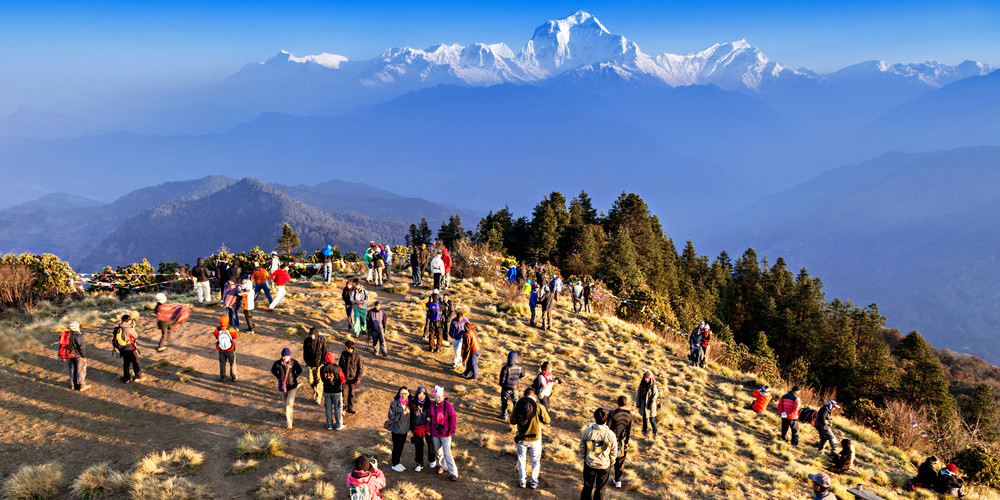
Overview
-
Duration: Typically 4-5 days
-
Start/End: The trek usually begins and ends in Nayapul, which is a short drive from Pokhara.
-
Difficulty Level: Easy to moderate
-
Best Season: Pre-monsoon (March to May) and post-monsoon (September to November), when the skies are clear and views are spectacular.
Key Highlights
-
Poon Hill: Climbing Poon Hill (3,210 meters) early in the morning to catch the breathtaking sunrise over the Himalayas is the highlight of this trek.
-
Ethnic Villages: Trek through charming Gurung and Magar villages, experiencing the warm hospitality and rich culture of the local communities.
-
Rhododendron Forests: Walk through enchanting forests of blooming rhododendrons if you visit during the spring months (March-April).
-
Panoramic Mountain Views: Enjoy spectacular views of Annapurna South, Annapurna I, Dhaulagiri, Machapuchare (Fishtail Mountain), and more.
Preparation Tips
-
Physical Fitness: While not as demanding as other treks, good physical fitness will enhance your enjoyment and comfort on the trail.
-
Gear: Pack light but don't forget essential trekking gear such as a sturdy pair of boots, warm clothing, and a waterproof jacket.
-
Hydration: Keep hydrated, especially since you’ll be trekking in various altitudes, though not extremely high.
The Ghorepani Poon Hill Trek offers a fulfilling experience through some of the most picturesque parts of the Annapurna region, packed with breathtaking mountain views and cultural encounters. It's an excellent introduction to Himalayan trekking, providing memorable moments with minimal difficulty.
Upper Mustang Trek
The Upper Mustang Trek offers a unique and extraordinary trekking experience in a part of Nepal that is unlike any other. Known as the "Last Forbidden Kingdom," this area was restricted to outsiders until 1992, preserving a way of life almost unchanged for centuries. Upper Mustang is characterized by its desert-like landscape, ancient Tibetan Buddhist culture, and stunning cliffside monasteries.
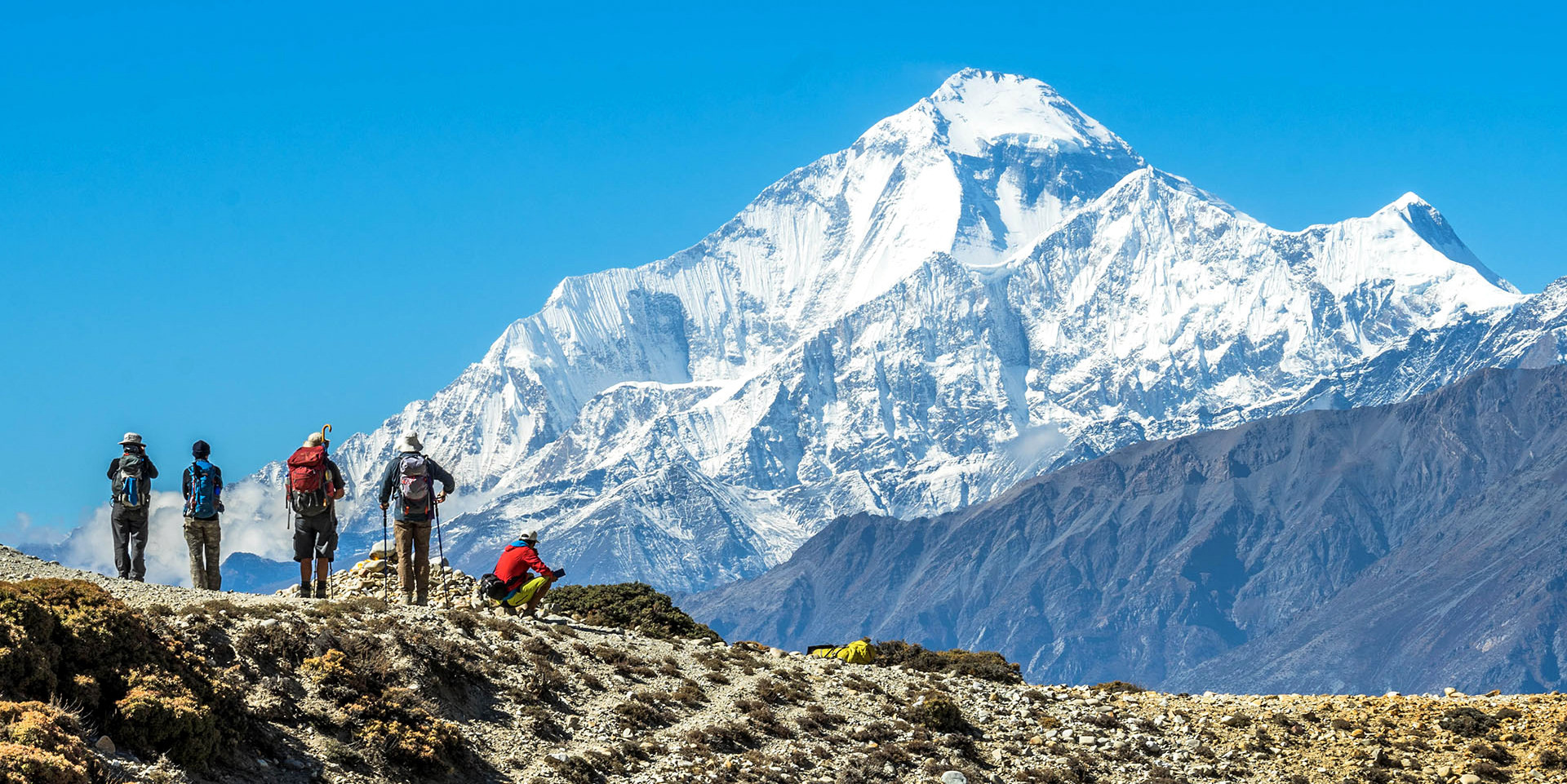
Overview
-
Duration: Typically 10-14 days
-
Start/End: The trek starts and ends in Jomsom, accessible via a short flight from Pokhara.
-
Difficulty Level: Moderate
-
Best Season: May to October, as the region lies in the rain shadow of the Himalayas, making it ideal during the monsoon season when other parts of Nepal are wet.
Key Highlights
-
Lo Manthang: The walled city of Lo Manthang, once the capital of the ancient Kingdom of Mustang, is a highlight with its royal palace and monasteries.
-
Ancient Caves and Monasteries: Explore centuries-old cave systems near Chhusang and the historic monasteries of Tsarang.
-
Tibetan Culture: Experience authentic Tibetan culture, which has been preserved by Mustang's relative isolation.
-
Dramatic Landscapes: Trek through a stark, beautiful landscape that features wind-eroded hills and colorful rock formations.
Preparation Tips
-
Permits: Obtain the special permits required for Upper Mustang, as it is a restricted area.
-
Physical Fitness: Ensure you are well-prepared physically, as the trek involves several days of walking in arid conditions with significant altitude changes.
-
Cultural Sensitivity: Be aware of and respectful of the local customs and religious practices, which are integral to the people of Mustang.
The Upper Mustang Trek is truly a journey to another world, offering an experience that is as culturally enriching as it is visually breathtaking. This trek is perfect for those looking to explore remote areas with a rich historical backdrop and stunning natural landscapes.
Gokyo Lakes Trek
The Gokyo Lakes Trek is a magnificent alternative to the more frequented Everest Base Camp Trek, offering trekkers spectacular views of massive Himalayan peaks and the serene beauty of the highest freshwater lake system in the world. This trek is renowned not only for its breathtaking landscapes but also for providing a more tranquil experience away from the crowded trails.
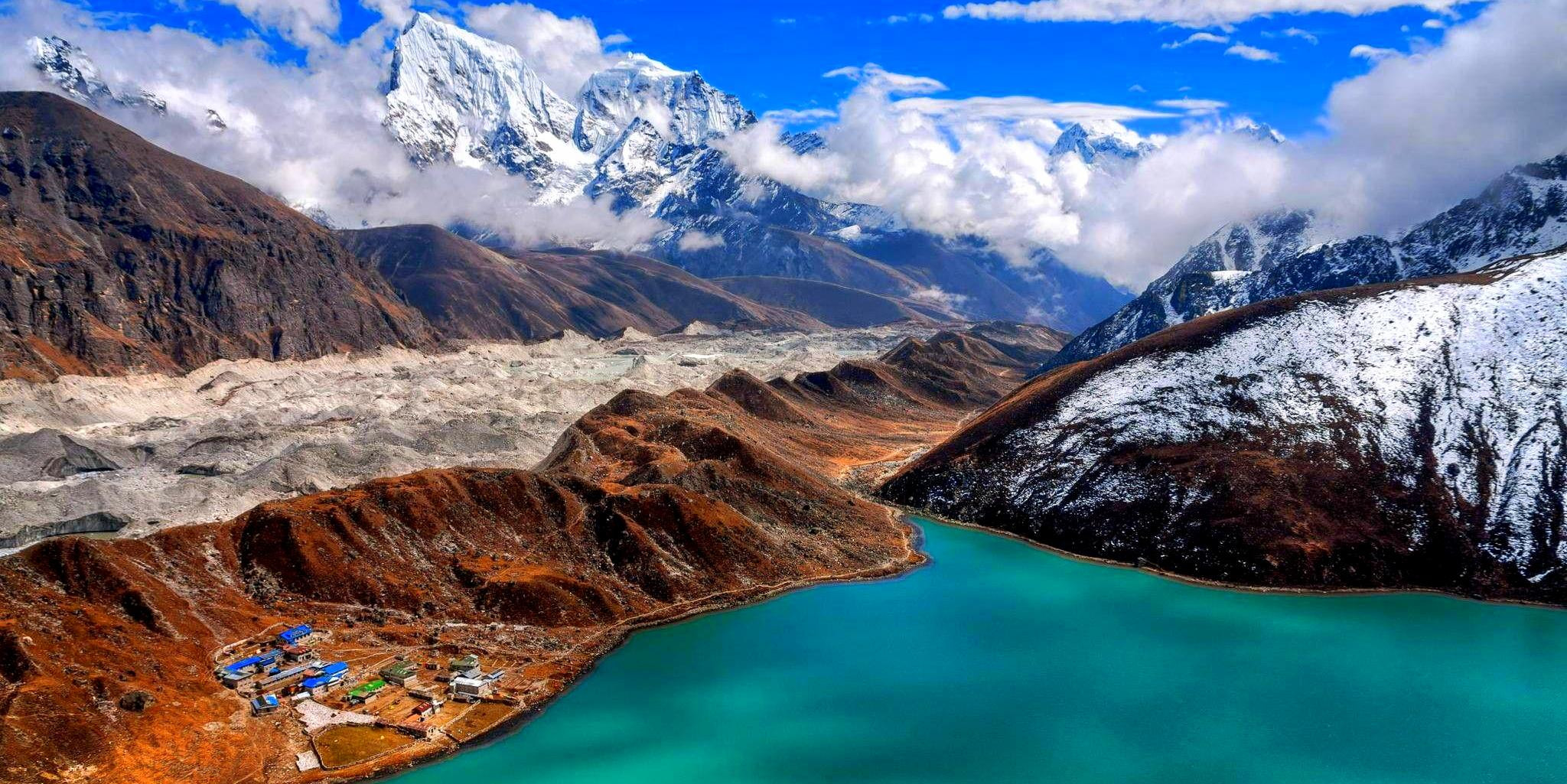
Overview
-
Duration: Typically 12-15 days
-
Start/End: The trek starts and ends in Lukla, accessed by a flight from Kathmandu.
-
Difficulty Level: Moderate to challenging
-
Best Season: Pre-monsoon (March to May) and post-monsoon (September to November), when the skies are clear and the views are at their best.
Key Highlights
-
Gokyo Lakes: Explore the series of six turquoise lakes, which are among the highest freshwater lakes in the world.
-
Gokyo Ri: Climb this peak to enjoy one of the best panoramic views in the Everest region, including the sights of Everest, Lhotse, Makalu, and Cho Oyu.
-
Ngozumpa Glacier: Traverse near the longest glacier in the Himalayas, a stunning and dynamic landscape of ice and rock.
-
Renjo La Pass: Optional challenge for those wanting extended views over the Himalayas, including an alternative route back to Lukla.
Preparation Tips
-
Physical Preparation: The trek involves long days of walking at high altitude, so physical fitness is crucial.
-
Equipment: Packing the right gear is essential, including warm layers, waterproof clothing, and comfortable, broken-in boots.
-
Altitude Awareness: Be aware of the signs of altitude sickness and manage ascent rates and acclimatization days carefully.
The Gokyo Lakes Trek is an unforgettable adventure that offers stunning natural beauty, challenging trekking, and a peaceful atmosphere, making it an excellent option for those looking to explore the Everest region beyond the conventional routes.
Tips for Most Popular Trekking Routes in Nepal
Trekking in Nepal is an unforgettable experience, but it requires careful planning and preparation. Here are essential tips for trekking the most popular routes in Nepal, ensuring a safe and enjoyable journey:
-
Choose the Right Season: The best seasons for trekking in Nepal are pre-monsoon (March to May) and post-monsoon (September to November). During these times, the weather is generally clear, and the mountain views are spectacular. Monsoon season (June to August) is less ideal due to rain, slippery trails, and obscured views. Winter (December to February) can be very cold, especially at higher altitudes, but is feasible for some treks with proper gear.
-
Acclimatize Properly: High-altitude treks, like Everest Base Camp or Annapurna Circuit, pose risks of altitude sickness. Acclimatize properly by incorporating rest days in your itinerary, ascending slowly, and staying hydrated. Recognize the symptoms of altitude sickness, which include headache, nausea, and dizziness, and take them seriously.
-
Train Before You Go: Trekking can be strenuous, especially on routes like the Manaslu Circuit or Everest Base Camp. Prepare by engaging in cardiovascular exercises such as hiking, running, swimming, or cycling. Strength training, particularly for your legs and core, can also be beneficial.
-
Pack Smart: Pack lightweight but durable gear. Essential items include a good-quality backpack, a sleeping bag suitable for sub-zero temperatures, sturdy trekking boots, water purification tablets, and layers of thermal and waterproof clothing. Don’t forget a first-aid kit, sunscreen, and lip balm.
-
Hire a Guide or Porter: Especially for remote or challenging treks like Upper Mustang or Manaslu, hiring a guide and/or porter can enhance your trekking experience. Guides offer valuable insights into local culture and geography, while porters can alleviate the physical challenge of carrying your gear.
-
Respect Local Customs: Nepal is rich in cultural diversity. Respect local customs and traditions. Dress modestly, ask permission before taking photographs of people, and be mindful of local etiquette, particularly in religious sites.
-
Ensure Proper Permits: Most trekking routes in Nepal require permits, such as TIMS (Trekkers’ Information Management System) or area-specific permits like those for Annapurna Conservation Area or Manaslu. Make sure you have all necessary permits organized before your trek, which can usually be arranged through trekking agencies.
-
Choose Sustainable Practices: Minimize your environmental impact by disposing of waste properly, using water sparingly, and avoiding single-use plastics. Supporting eco-friendly lodges and services helps promote sustainable tourism.
-
Stay Informed and Connected: While many trekking areas now have mobile coverage, it’s not always reliable. Consider renting a satellite phone for remote treks, or ensure you have some way of communicating in case of an emergency.
-
Invest in Travel Insurance: Make sure you have travel insurance that covers high-altitude trekking and possible helicopter rescue. Check the specifics of your policy to ensure all activities you plan to engage in are covered.
Following these tips will help ensure that your trekking experience in Nepal is not only memorable but also safe and responsible. Whether you’re exploring the serene Gokyo Lakes or the rugged trails of the Annapurna Circuit, preparation is key to enjoying all that Nepal’s stunning landscapes have to offer.
Ideal Time for Most Popular Trekking Routes in Nepal
The ideal time to trek in Nepal varies depending on the specific route, but generally, there are two optimal seasons across most trekking areas due to favorable weather conditions and clearer skies. Here's a detailed breakdown:
Pre-Monsoon (Spring Season: March to May)
-
Weather: During spring, the weather gradually warms, making daytime trekking pleasant, while nights remain cool but not freezing at higher altitudes.
-
Visibility: This is a great time for clear views of the mountains. As the season progresses, the haze can increase, but the early part of the season typically offers excellent visibility.
-
Nature: Spring is a vibrant time in Nepal as rhododendrons and other flowers bloom, especially in April, adding spectacular colors to the trails, particularly noticeable in the Annapurna region.
Post-Monsoon (Autumn Season: September to November)
-
Weather: Autumn is considered the best trekking season in Nepal. The weather is stable and dry, and the temperatures are moderate, making trekking comfortable both during the day and at night.
-
Visibility: Skies are usually crystal clear following the monsoon, offering some of the best mountain views, with fresh snow often visible on higher peaks.
-
Crowds: This season attracts the highest number of trekkers, so popular routes like the Everest Base Camp and Annapurna Circuit can be quite busy.
Other Considerations
-
Winter (December to February): Winter can be a good time for trekking in lower altitude areas, such as the Ghorepani Poon Hill trek. The higher altitudes are much colder, with nighttime temperatures often dropping below freezing, and snow may block high passes. However, the trails are less crowded, and the views are still spectacular if the weather is clear.
-
Monsoon (June to August): Monsoon season is the least favorable time for trekking due to heavy rains, slippery trails, and obscured mountain views. However, regions like Upper Mustang and Dolpo fall in the rain shadow of the Himalayas, making them viable options even during monsoon as they receive significantly less rainfall.
Autumn and spring are generally the best times to embark on a trek in Nepal due to favorable weather conditions and excellent visibility. Choosing the right time for your trek can significantly impact your experience, so consider these factors carefully when planning your journey.
Among trekkers from all over the world, Nepal is a leading destination with an abundance of trails including the Langtang Valley Trek, the Annapurna Circuit, and the Everest Base Camp Trek. Though most of the stunning natural beauty, these outings also offer rich cultural experiences. The optimum months for trekking are pre-monsoon (March to May) and post-monsoon (September to November), when the temperature is perfect for hiking. Whether one wants high-altitude thrills or gentle strolls across colorful terrain, Nepal's trails suit every whim. Preserving these opportunities for later generations depends on responsible trekking techniques.
FAQs for Most Popular Trekking Routes in Nepal
Q: What are the best seasons for trekking in Nepal?
A: The optimal times for trekking are during the pre-monsoon (spring: March to May) and post-monsoon (autumn: September to November) when the weather is stable and the skies are clear.
Q: Do I need a guide to trek in Nepal?
A: While not compulsory for all treks, a guide is highly recommended for safety and enriching the trekking experience, especially on more challenging or remote routes.
Q: What permits do I need for trekking in Nepal?
A: You will typically need a Trekkers' Information Management System (TIMS) card and a permit for the respective conservation area or national park, such as ACAP for Annapurna or Sagarmatha National Park for Everest.
Q: How should I prepare physically for a trek in Nepal?
A: Begin training at least two to three months in advance with a focus on cardiovascular exercises, strength training, and practical hiking.
Q: What should I pack for a trek in Nepal?
A: Essential items include suitable clothing for variable weather, sturdy hiking boots, a sleeping bag for cold climates, a waterproof jacket, water purification solutions, and a basic first aid kit.
Q: What are the risks of altitude sickness, and how can I prevent it?
A: Altitude sickness is a risk above 2,500 meters. Prevent it by acclimatizing properly, hydrating, and possibly using medications like Acetazolamide under medical guidance.
Q: How long does it take to complete popular treks like Everest Base Camp or Annapurna Circuit?
A: Everest Base Camp generally takes 12-14 days, while the Annapurna Circuit can range from 12-21 days, depending on your pace and itinerary.
Q: Can I trek solo in Nepal?
A: Solo trekking is feasible in most regions. However, for safety and navigation, consider hiring a guide or joining a group. Note that some border-near regions mandate trekking with a guide and a companion.
Q: What is the typical daily trekking duration on Nepalese treks?
A: Expect to trek for about 5-7 hours per day, though this can vary based on the terrain and altitude gain.
Q: What kind of accommodations can I expect while trekking?
A: Accommodations vary from basic teahouses offering communal rooms and local meals to more luxurious lodges on popular routes like Everest Base Camp. Camping is an option in remote areas.
For the Nepal tour, please click here.
If you are looking for different kinds of Nepal Tours or Trekking Packages, feel free to contact us.
